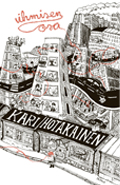Search results for "2010/02/2011/04/2009/10/writing-and-power"
Song without words
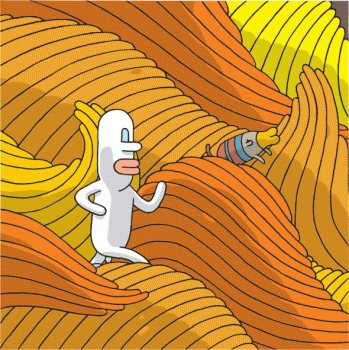
The episode we feature here is from Samuelin matkassa (‘Walking with Samuel’, Huuda Huuda, 2009; the book has been also published in Germany, Belgium, Sweden and Portugal)
Our lives are now more surrounded with images – moving or still, narratives or icons, emblems and symbols – than ever before – but do we know how to interpret them? How well can we read pictures?
Try this: Samuel is a cartoon character, created by Tommi Musturi, who wanders through time and a fantastically colourful universe of his own. His story is told in pictures, not words – and the details speak volumes. It tells, as you will find if you ‘read’ it carefully, about friendship between man and… another creature. More…
Iconic Inha
5 February 2015 | This 'n' that
From time to time we have featured the charismatic photographs taken of Helsinki by I.K. Inha (1865-1050) in 1908 – most recently in a book pairing Inha’s iconic images with contemporary photographs of the same scenes by Martti Jämsä (2009). Fifty-one of the images have now been made available online to the public for the first time on the Finnish Museum of Photography’s Flickr page.
Many of the scenes are so little changed that it’s a shock to see them peopled with behatted gentlemen and ladies in long skirts. Commissioned for Finland’s first travel guide, the photographs show the handsome buildings, parks and seafronts of a solidly bourgeois looking city that is still the capital of a Russian province, an autonomous Grand Duchy actively fostering the dream of independence that is to be realised nine years later, in 1917.
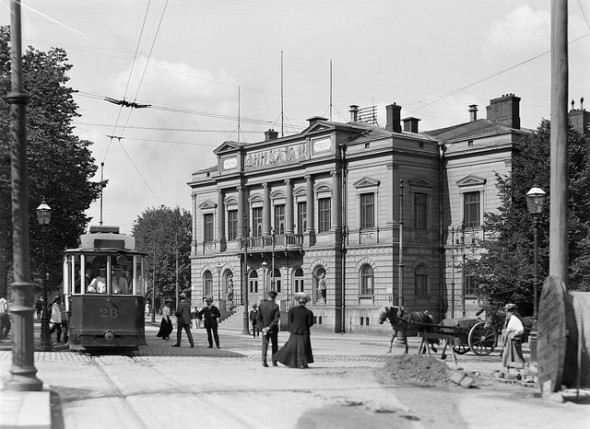
Student Union Building on Itäinen Heikinkatu (now Mannerheimintie). I.K. Inha, 1908.
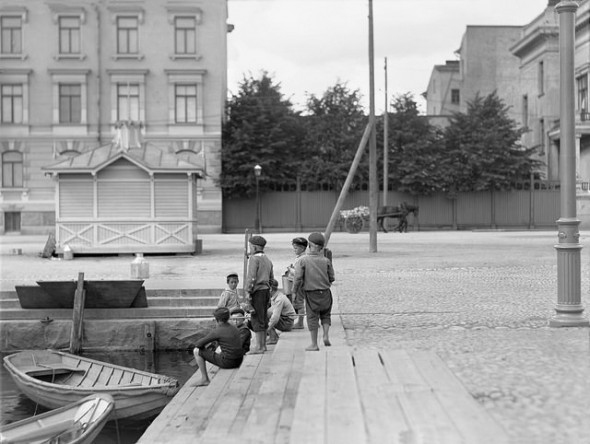
Boys at Hietalahti harbour. I.K. Inha, 1908.
Max Engman: Pitkät jäähyväiset [The long farewell]
18 March 2010 | Mini reviews, Reviews
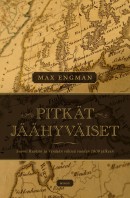 Pitkät jäähyväiset. Suomi Ruotsin ja Venäjän välissä vuoden 1809 jälkeen
Pitkät jäähyväiset. Suomi Ruotsin ja Venäjän välissä vuoden 1809 jälkeen
[The long farewell. Finland between Sweden and Russia after 1809]
Helsinki: WSOY, 2009. 239 p.
ISBN 978-951-0-34880-2
€ 36, hardback
In the aftermath of the Finnish War fought between Russia and Sweden in 1809, Finland was passed from Sweden to Russia. Finland’s political origins can be traced back to the autonomous status of a Grand Duchy in the Russian Empire, granted at that time. Historian Max Engman, a professor at Åbo Akademi, examines this process of separation. Along with the immediate consequences of the war and government reforms, he investigates Finland’s ideological distancing from Sweden and its period of ‘russification’. Engman provides a favourable view of the relations between the Russian Empire and Finland in the 19th century: the Russians were quite surprised by the Finns’ organisational skills as their autonomy increased. Finns’ remarkable loyalty towards their new motherland is explained as both a genuine feeling and a matter of political expediency. Finland quickly began to drift away from Sweden, and Finland’s previous mother country began to seem provincial when compared to St Petersburg. Max Engman has published several studies on the breakup of empires and on Finnish identity, particularly in relation to Russia.
Raija-Liisa Mäkelä: Minä, muilutetun tytär. Puoli vuosisataa Neuvostoliitossa [Abductee’s daughter. Half a century in the Soviet Union]
5 July 2010 | Mini reviews, Reviews
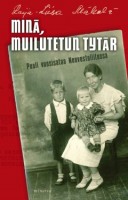 Minä, muilutetun tytär. Puoli vuosisataa Neuvostoliitossa
Minä, muilutetun tytär. Puoli vuosisataa Neuvostoliitossa
[Abductee’s daughter. Half a century in the Soviet Union]
Jyväskylä: Minerva, 2009. 321 p, ill.
ISBN 978-952-492-294-4
€ 24, hardback
During the period 1910-1930 many people defected from Finland to Russia/USSR both for political reasons and in the hope of better living standards. The labourite leader Yrjö Mäkelä was forcibly abducted across the border by the radical Finnish right-wing anti-Communist Lapua People’s Movement. Mäkelä’s fiancée also emigrated to the USSR, where the couple married and had two children. Raija-Liisa Mäkelä was born in Petrozavodsk, close to the Finnish border, in 1938, but never saw her father, who was interned in one of Stalin’s prisons and executed, although innocent. In the Soviet Union the Mäkelä family had both to carry the label of ‘enemy of the people’ and to endure majority (Russian) population’s antipathy towards Finns. The memoirs cover the family’s experiences from 1930 until 1990, when the author was able to move to Finland. In addition to providing evidence of remarkable survival skills, the book contains an interesting portrayal of Finnish widows and their families living in Petrozavodsk and nearby Sortavala.
Kielissä kulttuurien ääni [Language: the voice of cultures]
22 February 2010 | Mini reviews, Reviews
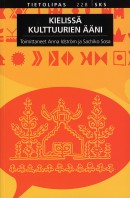 Kielissä kulttuurien ääni
Kielissä kulttuurien ääni
[Language: the voice of cultures]
Toim. [Ed. by] Anna Idström and Sachiko Sosa
Helsinki: Suomalaisen Kirjallisuuden Seura, 2009. 311 p.
ISBN 978-952-222-129-2
€ 28, paperback
It is estimated that at least half of the world’s languages are dying out. This book aims to provide readers with information on the relationship between languages and cultures. What sorts of human cultural traditions are disappearing as a result of language extinction? In this book, linguistic researchers describe aspects of the interplay between language and culture and how different languages shed light on the cultures of their speakers. The 15 chapters include studies of the special features of Khanty texts, the Mansi language of Russia, Bantu languages, Creoles and Japanese as well as of language taboos within Finnish Roma culture. The subject is also addressed via translation studies; translating the Bible into hundreds of languages has proved that every language is unique – no language is completely substitutable for another in all its finest nuances.
Johan Leche & Johan Grysselius
The birds and the bees
2 May 2011 | Non-fiction
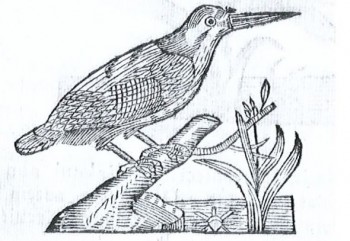
Halcyon or Ispida (kingfisher)? A picture of this mythical bird from a 17th-century thesis, published in Suomen lintutieteen synty

Halcyon or Ispida (kingfisher)? A picture of this mythical bird from a 17th-century thesis, published in Suomen lintutieteen synty
The famous Swedish scientist Carl von Linné claimed in his doctoral thesis in 1757 that swallows spend their winters underwater.
Two of Linné’s countrymen, working at Åbo Academy in Finland, proved him wrong seven years later by giving evidence of migration, but to no avail: the silly theory prevailed until the 19th century.
In these extracts doctors Leche and Grysselius eloquently present a ‘Well-Intended Reader’ with errors of humanity that become epidemic
Extracts from ‘An Academic Treatise on The Wintering and Migration of Swallows’ by Johan Leche & Johan Grysselius (1764), published in Finnish (translated from Latin by Sari Kivistö) in Suomen lintutieteen synty. Turun Akatemian aika (‘The birth of the Finnish ornithology. The era of the Åbo Akademi’, Faros, 2009), edited by Esa Lehikoinen, Risto Lemmetyinen, Timo Vuorisalo & Sari Kivistö
Preface
As we know, humanity is no less inclined to err in matters pertaining to nature than in matters of morals. With regards to errors concerning the natural world, even the most experienced scholars are not always immune. The common people, for their part, have not learned to avoid such pitfalls and are thus constantly bumping into them. This is no wonder, since they are not accustomed to using the help of natural science or mathematics, and are thus unable to perform appropriate tests, to correctly assess future eventualities, or to observe phenomena closely unless they concern something already familiar to them. More…
Teemu Kaskinen: Sinulle, yö [To you, the night]
29 October 2009 | Mini reviews, Reviews
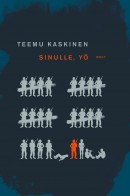 Sinulle, yö
Sinulle, yö
[To you, the night]
Helsinki: WSOY, 2009. 268 p.
ISBN 978-951-0-35599-2
€ 29, hardback
In Teemu Kaskinen’s debut novel, Finland is at war with Norway and its NATO ally the United States. Fierce battles rage in the winter darkness in Lapland, and Helsinki has become the stage for a contemporary war, which seems rather ridiculous – except for the fact that there are neighbouring countries currently at war with each other after having previously coexisted peacefully for ages, and it would be easy to name several thriving cities whose streets have suddenly been filled with soldiers, bomb blasts and terror. In this novel by Kaskinen (born in 1976; he has previously written four plays) the streets and interiors are also filled with lust and the satisfaction of basic needs. In cool, modernistic episodes, the author shows how people’s instincts begin to drag them along in a crisis situation. Sinulle, yö is a grotesque, brutal novel – but then again, what would happen if you, I and the neighbour’s lad ended up in similar circumstances, like those that engulfed Sarajevo not all that long ago?
And the winner is…
9 February 2010 | In the news
The Runeberg Prize for fiction, given this year for the twenty-fourth time, went to Kari Hotakainen (born 1957) for his novel Ihmisen osa (‘The human lot’, Siltala, 2009). The prize, worth €10,000, was awarded on 5 February – on the birthday of the poet J.L. Runeberg (1804–1877) – in the city of Porvoo.
The jury – representing the prize-founders, the Uusimaa newspaper, the city of Porvoo, both the Finnish and Finland-Swedish writers’ associations and as the Finnish Critics’ Association – chose the winner from a shortlist of seven books. ‘The picture of a fast-changing society that Hotakainen paints in his novel is not a comforting one, but neither is it hopeless…. chilling and perceptive, but not without sharp comedy’, the jury concluded.
Monika Fagerholm: Lolauppochner [Lola upside down]
20 September 2012 | Mini reviews, Reviews
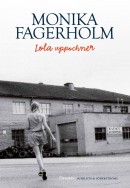 Lolauppochner
Lolauppochner
[Lola upside down]
Helsinki: Schildts & Söderströms, 2012. 461 p.
ISBN 978-951-52-2997-7
€ 31, hardback
Lola ylösalaisin
Suomentanut [Translated into Finnish by]: Liisa Ryömä
Helsinki: Teos, 2012. 300 p.
ISBN 978-951-851-480-3
€28.40, hardback
Lolauppochner (‘Lola upside down’) is a more authentic crime novel than the same author’s Den amerikanska flickan (English translation: The American Girl, 2004) and Glitterscenen (The Glitter Scene, 2009), though they too wove their dense fiction around an old crime. Readers who are at ease in Fagerholm’s luxuriant wordscapes with their tragic teens, country bumpkins and summer visitors will still be able to find their way around the small community where Jana Marton, a teenage girl on the way to her job at the local store, discovers the corpse of a boy, a key player among the local gilded youth. The novel’s opening, and many sections that follow, are extremely effective, with sharp and lightning-swift characterisations and a fine intuition for both the fear and the excitement in the social circle where the murder turns up hidden connections like worms from the soil. But the novel is too long for its own good – somewhere towards the end it ceases to gain depth, and the gallery of characters starts to feel too big. All the same, this book is a must for Fagerholm’s readership at home and abroad. A bonus for locals – and attentive outsiders – is present in the outlines of the small seaside town of Ekenäs that can be glimpsed behind the text. They supply a kind of physical magic that rubs off on much else besides – characters, moods and sense of place.
Translated by David McDuff
Kimmo Oksanen: Kerjäläisten valtakunta [Kingdom of beggars]
24 September 2009 | Mini reviews, Reviews
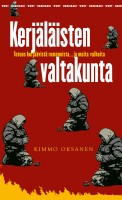 Kimmo Oksanen: Kerjäläisten valtakunta.Totuus kerjäävistä romaneista ja muita valheita
Kimmo Oksanen: Kerjäläisten valtakunta.Totuus kerjäävistä romaneista ja muita valheita
[Kingdom of beggars. The truth about Roma beggars, and other lies]
Helsinki: WSOY, 2009. 214 p.
ISBN 978-951-0-35778-1
€ 15, paperback
After Romania and Bulgaria had joined the European Union in 2007, a small group of Roma beggars from Romania arrived in Helsinki. This was a sight that was familiar to Finns on their travels abroad, but alien to them in the environment of their own city. Begging is not a crime in Finland, but the phenomenon caused a great stir in the media and, eventually, among political decision-makers. This polemic by journalist Kimmo Oksanen gives a face to the beggars and reveals many factors behind begging, as well as experiences of poverty and discrimination. Oksanen observed the beggars on the streets daily and travelled to their home villages to investigate their backgrounds. Roma criminal activity indisputably occurs elsewhere in Europe, but Oksanen maintains that there is no evidence that organised crime has arrived in Finland. The beggars are nevertheless objects of fear as well as racist attitudes.
Maritta Pohls & Annika Latva-Äijö: Lotta Svärd. Käytännön isänmaallisuutta [Lotta Svärd: practical patriotism]
1 April 2010 | Mini reviews, Reviews
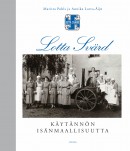 Lotta Svärd. Käytännön isänmaallisuutta
Lotta Svärd. Käytännön isänmaallisuutta
[Lotta Svärd: Practical patriotism]
Helsinki: Otava, 2009. 454 p., ill.
€ 46, hardback
Lotta Svärd was the name of the Finnish women’s voluntary military organisation, which performed auxiliary defence work between 1921 and 1944. It took its name from a character in a poem by the 19th-century Finnish writer J.L. Runeberg: Lotta Svärd accompanied her soldier husband to the front in the Finnish War of 1709. During the Winter and Continuation Wars (1939–1944), the ‘Lottas’ provided assistance to soldiers and took over men’s jobs, freeing them to go to the front. Around 40,000 Lottas assisted the Finnish army by performing maintenance and staff duties as well as air-raid monitoring. When the organisation was disbanded in 1944, it had some 300,000 members. As Lotta Svärd was ideologically an organisation for women emphasising home, nation and religion, it divided public opinion, and may still do so today. This book, which details the organisation’s history, work and people, is fourth and final volume in the history project on Lotta Svärd.
Juba: Minerva. Alajuoksun kelluva pullukka [Minerva. The floating dumpling of the Lower Reaches]
9 January 2014 | Mini reviews, Reviews
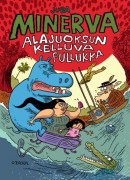 Minerva. Alajuoksun kelluva pullukka
Minerva. Alajuoksun kelluva pullukka
[The floating dumpling of the Lower Reaches]
Helsinki: Otava, 2013. 48 pp., ill.
ISBN 978-951-1-25731-8
€17.80, hardback
Minerva is a cartoon character who has appeared in two previous volumes (2006, 2009) by Juba, a.k.a. Jussi Tuomola. Juba is the creator of an extremely popular comics series for adults about the woman and the pig (both male chauvinist and porcine), Viivi and Wagner. Minerva is a brave and extremely resourceful little heroine who is never daunted by even the wildest adventures she experiences after leaving home to fly around in weird lands. Petra, the floating dumpling of the Lower Reaches, is a woman with magical powers who likes to travel in a flying gondola. In this volume Minerva also meets other old friends on her journey under water, underground, on a river and in the air above a jungle, in pursuit of a rare ingredient for a perfume that Petra has determined to acquire no matter what. The comedy in the uninhibitedly fantastic adventures, illustrated effectively in cartoon squares of different sizes, will amuse readers of many ages.
Sakari Toiviainen: Kadonnutta paratiisia etsimässä [In search of a lost paradise]
12 August 2009 | Mini reviews, Reviews
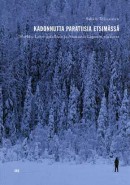 Kadonnutta paratiisia etsimässä. Markku Lehmuskallion ja Anastasia Lapsuin
Kadonnutta paratiisia etsimässä. Markku Lehmuskallion ja Anastasia Lapsuin
elokuvat
[In search of a lost paradise. The films of Lehmuskallio and Anastasia Lapsui]
Helsinki: Finnish Literature Society, 2009. 274 p., ill.
ISBN 978-952-222-067-7
€ 28, paperback
Markku Lehmuskallio (born 1938) is a filmmaker and photographer who since 1973 has made 18 full-length feature films, as well as a number of shorter ones. A half of his work is a collaborative venture with his wife Anastasia Lapsui, who is a native of the Nenets region in Arctic Russia. The main subjects of his films are the relationship between people and nature, and indigenous cultures throughout the northern hemisphere. Lehmuskallio’s early work reflects his activity as a pioneer of the green movement, as his films from that period deal with the environmental threat to the forests. Lehmuskallio has also directed fiction films, including the first to be made in the Nenets language, the award-winning Seven songs from the tundra. He has documented the conflicts between indigenous and national cultures, such as the destruction of the environment of the Siberian peoples in the process of gas and oilfield exploration. The filmographer Sakari Toiviainen had access to original material ranging from brittle old reels of film to diaries; Lehmuskallio’s own voice comes through clearly in the text.
Under the August moon
26 August 2011 | In the news
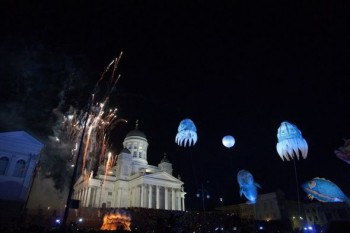
The Night of the Arts, 2009. Photo: Sasa Tkalcan
Helsinki becomes a busy cultural city in every August: Helsinki Festival, Stage Theatre Festival and Poetry Moon festival, for example, have a great variety of happenings on offer.
Also the seventh annual Helsinki Poetics Conference – an international and interdisciplinary conference for poets, writers and literary scholars – takes place on 27 and 28 August.
The organisers are the poetry organisation Nihil Interit (the publisher of the journal Tuli&Savu, ‘Fire&Smoke’) in collaboration with the Finnish Literary Research Society, and it is a part of the Runokuu / Poetry Moon international poetry festival.
And The Night of the Arts, of Helsinki Festival, takes over the city – for the 23rd time, tonight.
Esko Rahikainen: Impivaaran kaski [The burnt clearing at Impivaara]
24 September 2009 | Mini reviews, Reviews
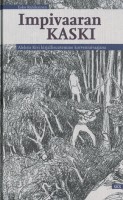 Impivaaran kaski. Aleksis Kivi kirjallisuutemme tienraivaajana
Impivaaran kaski. Aleksis Kivi kirjallisuutemme tienraivaajana
The burnt clearing at Impivaara. Aleksis Kivi as trailblazer of Finnish literature.
Helsinki: Suomalaisen Kirjallisuuden Seura, 2009. 270 p., ill.
ISBN 978-952-222-107-0
€ 29, hardback
This year marks the 175th anniversary of the birth of Finnish national author Aleksis Kivi (1834–1872). His work as a creator and cultivator of the Finnish language and literature was truly pioneering. Impivaaran kaski (the title refers to his major work, the novel Seitsemän veljestä, Seven Brothers, 1870) deals with the social conditions surrounding the creation of his works and examines their critical reception. Divisive literary disputes raged, and it was not until the second decade of the 20th century that Kivi’s status came to be acknowledged more widely. Esko Rahikainen – a librarian at the National Library and the author of several books on the life and works of Kivi – has utilised new sources to investigate the criticism and marketing of Kivi, as well as readers’ experiences and the use of his works in Finnish education.

